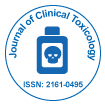
Journal of Clinical Toxicology
Open Access
ISSN: 2161-0495

ISSN: 2161-0495
Gerd Bode and Jan Willem van der Laan
University of Gottingen, Germany
Medicines Evaluation Board, Netherlands
Scientific Tracks Abstracts: J Clin Toxicol
Rodent carcinogenicity studies are not meant to produce a toxicology result/tumor count, but to extrapolate (translate) these data and develop a prediction of potential cancer risk for patients. If there is a real risk, then either no approval can be granted or a rigid risk/benefit analysis will justify any treatment of humans. Altogether, there are too many positive results from such long-term rat or mouse studies. The need for the 2 year rodent assay to assess a carcinogenic potential is questioned already for years. From retrospective analyses of various datasets (PhRMA, FDA, JPMA and common EU+FDA) it was concluded that based on genotoxicity and non-genotoxic mechanisms, detectable in pharmacology and chronic toxicity data (usually present at the end of phase 2 in the development of a new pharmaceutical) the outcome of the 2-yr rat carcinogenicity study can be predicted with reasonable assurance at the two extremes of the spectrum: Negative predictions can be made when predictive carcinogenic signals are absent and positive predictions are possible when such signals are present. In between a category of compounds still remain for which the outcome cannot be predicted with sufficient certainty and where experimental studies may have added value to identify real hazards. These hypotheses are being tested in an ongoing common exercise by agencies and industries. Such prospective evaluations are necessary to justify any revision of the present recommendations of the ICH guideline S1. Until 2017, sponsors will be strongly encouraged to submit carcinogenicity assessment documents (CADs) to drug regulatory agencies (DRAs) for all investigational pharmaceuticals with ongoing or planned 2-yr rat carcinogenicity studies. The CAD would address the overall carcinogenic risk of the investigational drug as predicted by the available knowledge and a rationale for why the conduct of long-term studies would or would not add value to that assessment, in the latter case by a request of a ��?virtual� waiver. Drug regulatory agencies will independently review the submitted documents and evaluate the degree of concordance with sponsors. During this prospective evaluation period waiver requests will not be granted but the data are intended solely for collecting experience. Submitted CADs will finely be compared to the real outcome of the 2-yr carcinogenicity studies and/or any other factors of a weight of evidence evaluation. Main objective will be the assessment of accuracy of the predictions, with emphasis on the ��?Virtual� waivers. This paper will inform about the details of the retrospective analyses leading to the new hypothesis and will report about preliminary results of this prospective exercise. Hopefully, further contributing participation can be stimulated.
Email: gerd-bode@t-online.de